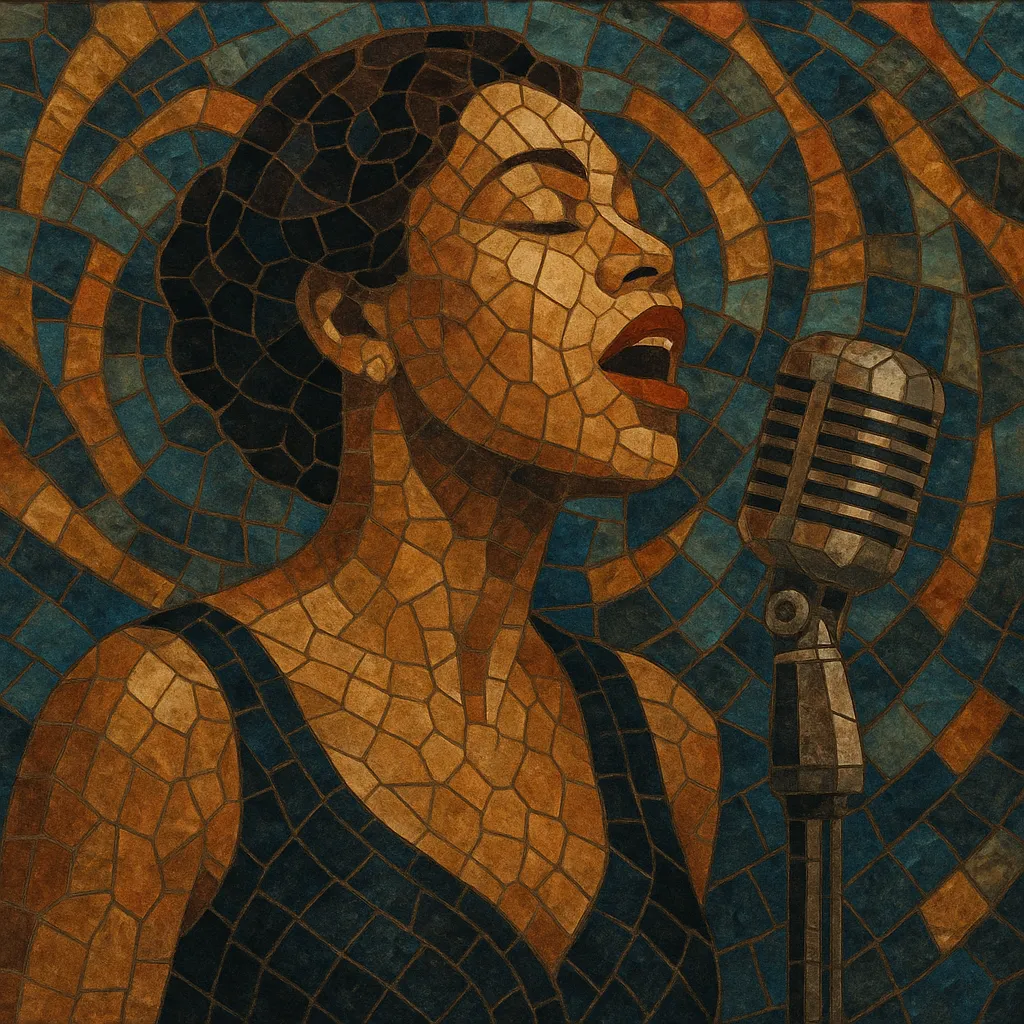Vocal jazz is the art of singing within the jazz idiom, emphasizing improvisation, rhythmic nuance, and personal interpretation of songs—often drawn from the Great American Songbook. Singers use jazz phrasing, swing feel, and timbral control to reshape melodies, bend pitches, and tell stories through the lyric.
The style ranges from swinging uptempo numbers with scat improvisation to intimate ballads colored by subtle rubato and behind-the-beat delivery. While many vocal jazz performances feature small combos, the genre has also flourished with big band arrangements and sophisticated orchestrations.
Vocal jazz emerged as singers adapted early jazz practices to the voice, drawing on blues expressivity and popular song forms of Tin Pan Alley. Louis Armstrong’s 1920s recordings helped codify jazz phrasing and popularize scat singing, while Bessie Smith and Ethel Waters brought blues-inflected storytelling to jazz bands. By the 1930s, the repertoire of Broadway and Hollywood standards provided a shared songbook for improvising vocalists.
The big band era offered fertile ground for vocal jazz. Ella Fitzgerald, Billie Holiday, and Dinah Washington shaped the template for swing phrasing, elastic time, and melodic reharmonization. Singers developed signature readings of 32-bar AABA songs and 12-bar blues, often working with bandleaders and arrangers to create arrangements with intros, shout choruses, and tagged endings.
With the rise of bebop and cool jazz, vocalists expanded harmonic vocabulary and rhythmic freedom. Sarah Vaughan, Carmen McRae, and Mel Tormé explored extended harmonies and intricate phrasing, while Nat King Cole and Frank Sinatra bridged jazz technique with lush, orchestrated settings. Vocalese—a lyricized approach to instrumental solos—gained traction through artists like Lambert, Hendricks & Ross.
Vocal jazz diversified into intimate small-group settings, crossover with pop and soul, and collaborations with contemporary jazz players. Nina Simone and later artists brought social consciousness and genre fusion to the form. Today, vocal jazz remains vital through reinterpretations of standards, contemporary originals, and global influences, continuing to emphasize personal expression, improvisation, and storytelling.
Select repertoire from jazz standards, blues, and classic popular songs. Focus on lyrical storytelling and a personal interpretive angle. Use dynamics, timbre, and articulation to shape narrative and mood.
Work with common jazz forms: 32-bar AABA and 12-bar blues. Employ ii–V–I progressions, secondary dominants, tritone substitutions, and extended chords (9ths, 11ths, 13ths). Reharmonize melodies to create fresh colors while preserving the song’s arc.
Center the groove on swing eighths or straight feels appropriate to ballads and bossa nova. Practice behind-the-beat phrasing, laid-back placement, and microtiming. Encourage call-and-response with the rhythm section and use space effectively.
Incorporate scat solos using syllables that emulate horn articulations. Vary melody with passing tones, enclosures, and rhythmic displacement. Explore rubato verses, tasteful ornamentation, and dramatic arcs that serve the lyric.
Craft arrangements with short intros, interludes, and tags. Alternate between vocal choruses and instrumental solos. Consider key changes for climactic returns, use stop-time for emphasis, and end with a soft tag or dynamic button.
Typical settings include voice plus piano (or guitar), double bass, and drums; add horns or a full big band for larger textures. Use tasteful mic technique, subtle vibrato, and clear diction. Encourage interactive comping and dynamic builds that support the vocal lead.
Transcribe master vocal and horn solos to refine phrasing. Learn multiple lyric choruses and experiment with tempo and key. Rehearse with a metronome on 2 and 4 to internalize swing and count-in pickups accurately.


